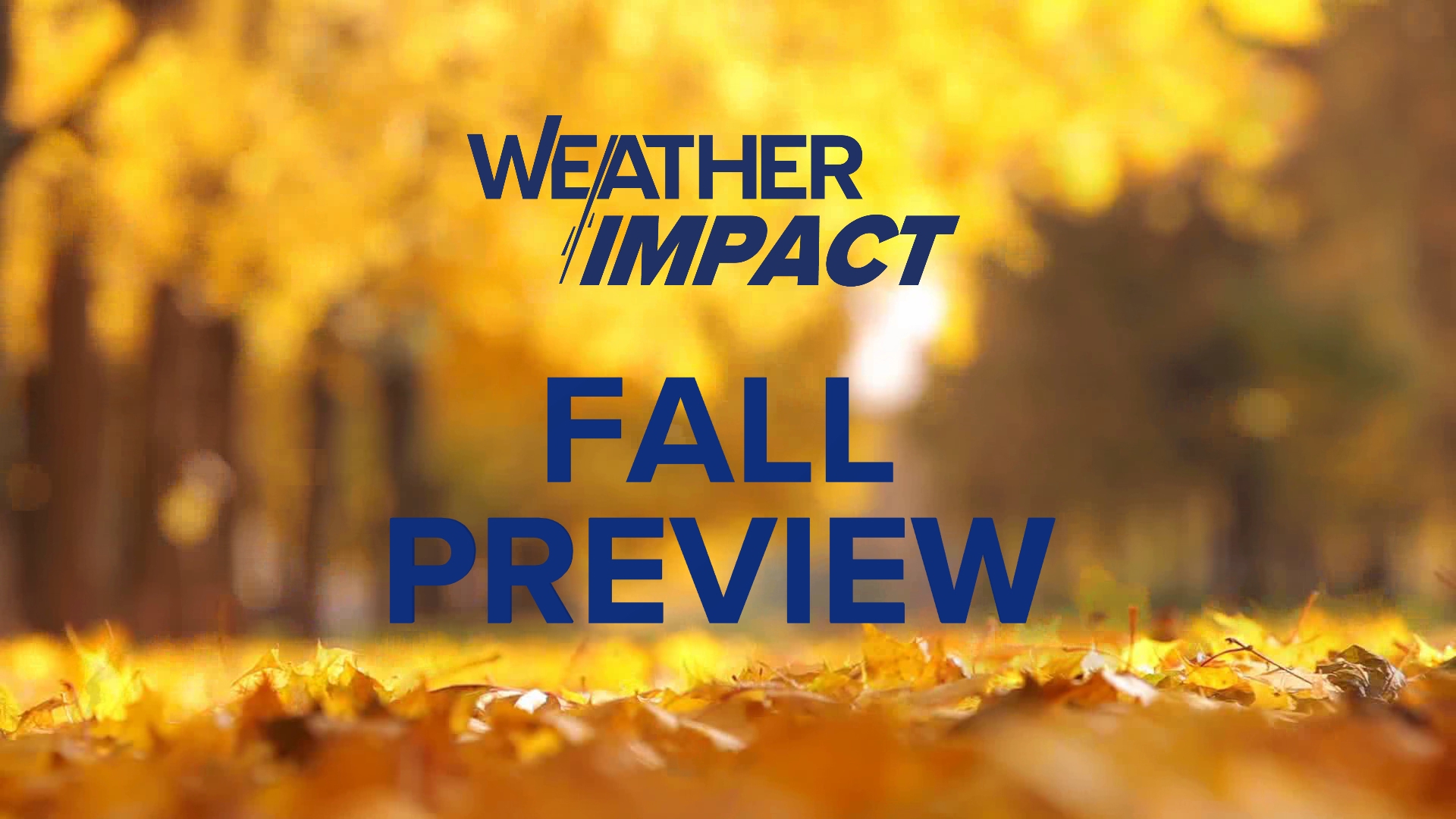ST. LOUIS — September in St. Louis can mean a lot of things, ranging from 100s to freezing. This is a very transitional month as we work our way into fall.

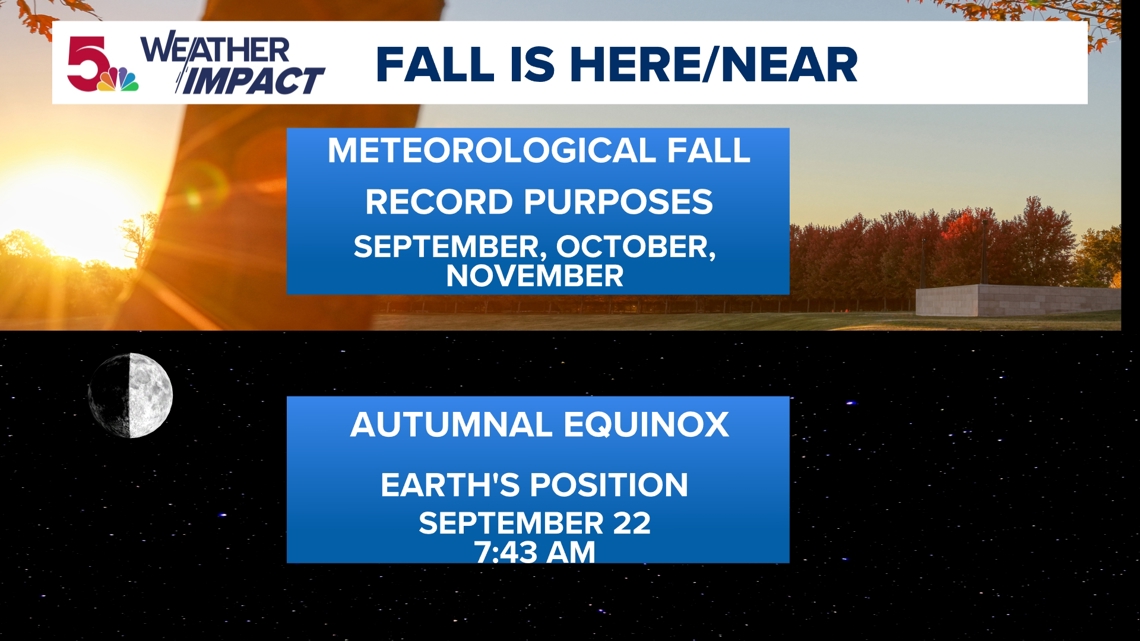
Sept. 1 we begin our journey into meteorological fall. That’s September, October and November. This is for record purposes only, as the Autumnal Equinox usually falls on a different date each year due to the earth’s position. This year, it will take place at 7:43 a.m. on Sept. 22.
We start the month with a sunrise at 6:30 a.m. and a sunset at 7:29 p.m., but throughout the month, we lose around an hour and 12 minutes of daylight. By the start of October, we are at a 6:57 a.m. sunrise and a 6:42 p.m. sunset. We lose another hour and 15 minutes of daylight the rest of the month, with November starting at 7:28 a.m. and a sunset of 6 p.m.
We set our clocks forward on Nov. 3, and then it seems like the days will get really short. What does time have to do with fall? We know the days will get shorter, but the length of daylight plays as much of a key role in fall color change as some of the other temperature and precipitation impacts.

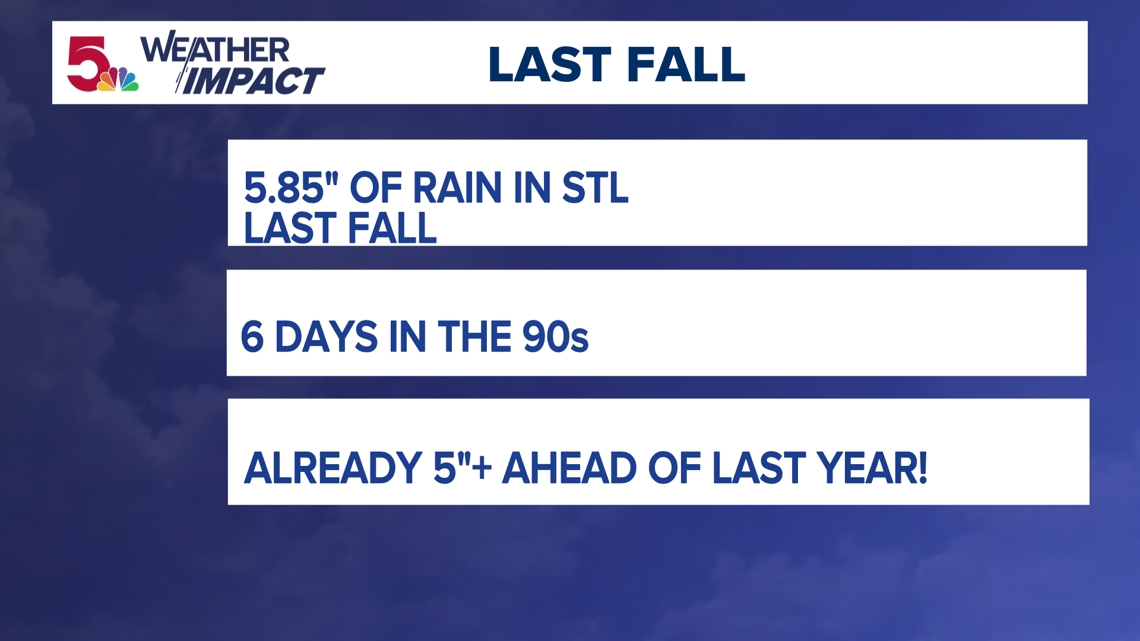
We managed to only get 5.85 inches of rain in St. Louis last year from September to November, with less than an inch of that coming in November. That coupled with 6 days in the 90s really inhibited our fall season.
This year, not only are we over 5 inches ahead of last year, but we are 3 inches ahead of where we were last year in August.
So when do we typically get the first frost and freeze of the fall season?

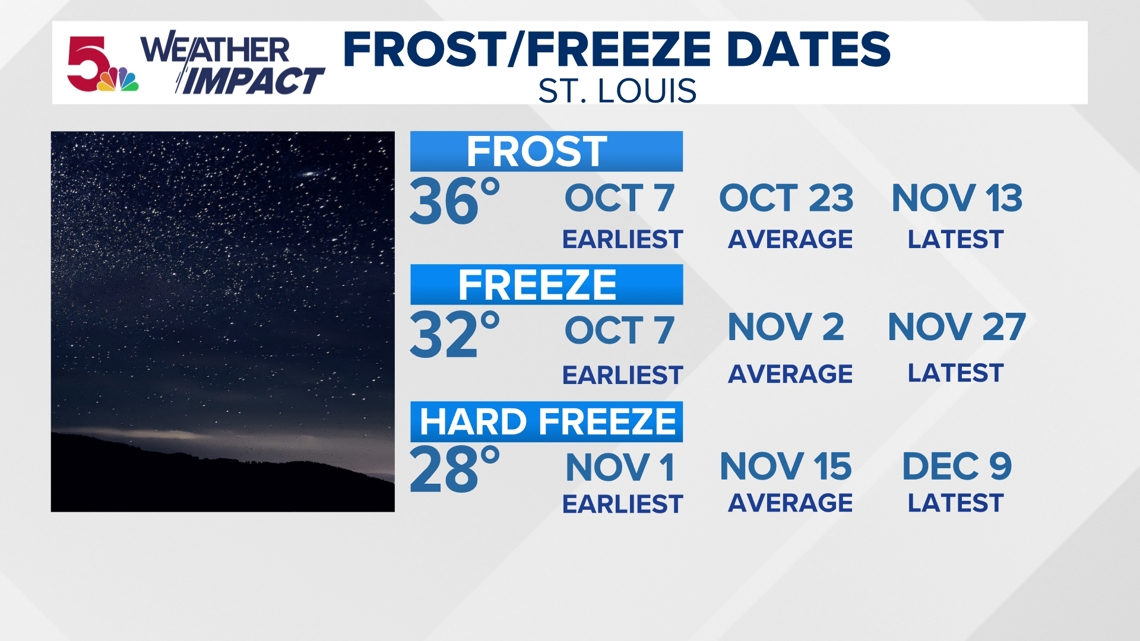
Using the last 30 years as our guide, St. Louis has an average first frost of Oct. 23. The earliest we have seen during this time period was Oct. 7, and the latest was Nov. 13. Our average first freeze is Nov. 2, with the earliest being Oct. 7th and the latest being Nov. 27. Our average first hard freeze is Nov. 15, with the earliest being Nov. 1 and the latest being Dec. 9.

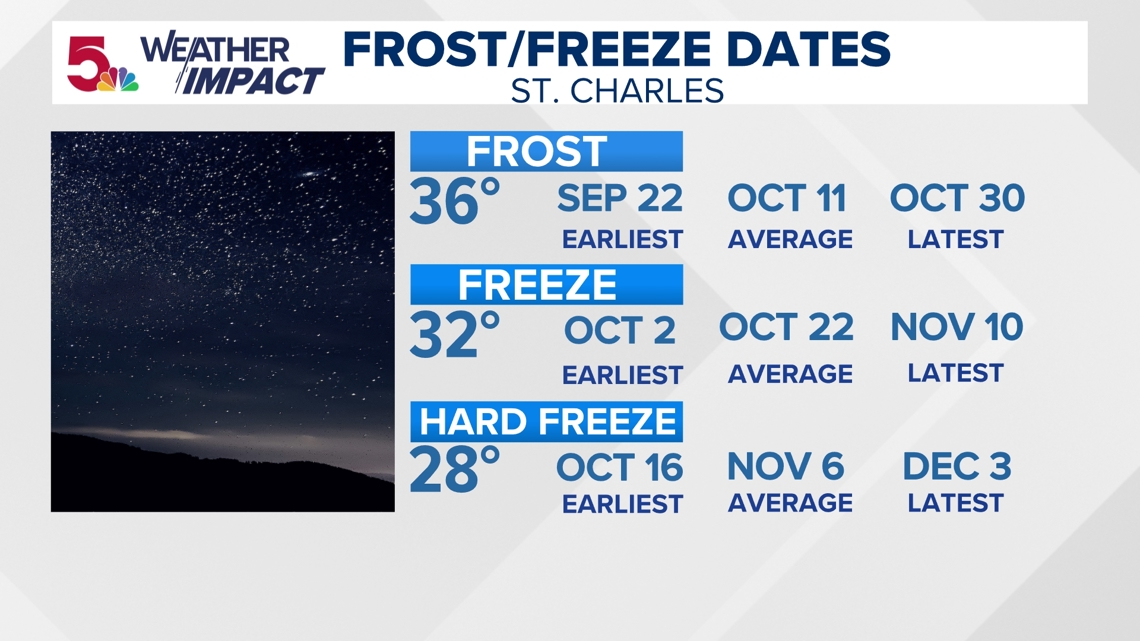
Our average first frost in St. Charles is Oct. 11, with the earliest being Sep. 22 and the latest being Oct. 30. The average first freeze in St. Charles is Oct. 22, with the earliest first freeze being Oct. 2 and the latest being Nov. 10. The average first hard freeze is Nov. 6, with the earliest being Oct. 16 and the latest being Nov. 3.

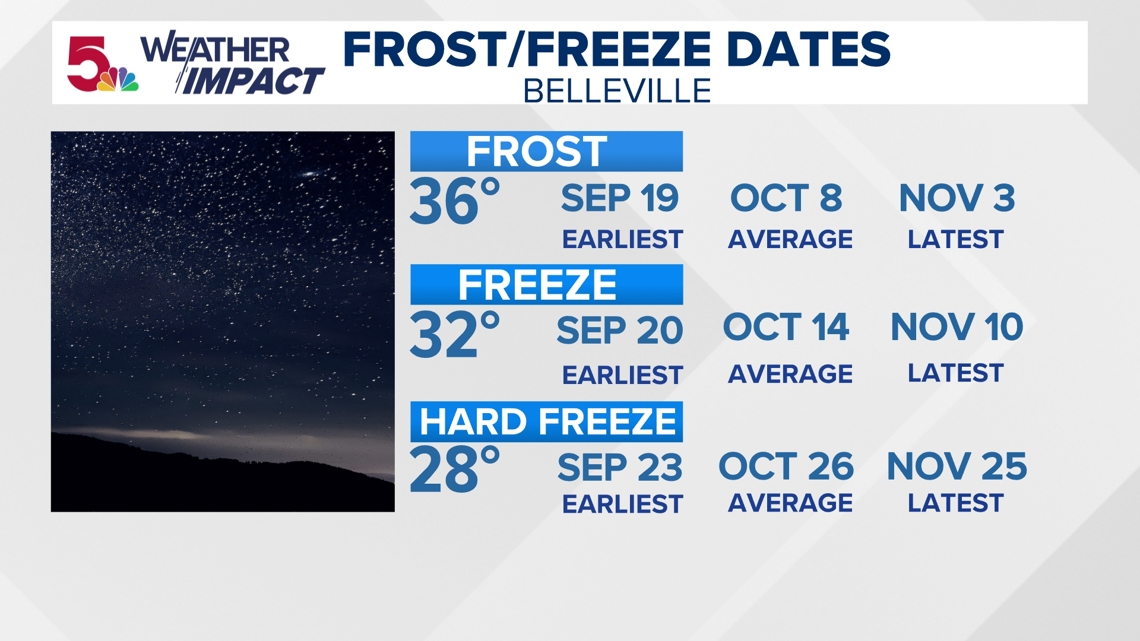
The average first frost in Belleville is Oct. 8, with Sept. 19 being the earliest and the latest being Nov. 6. The average first freeze is Oct. 14, with the earliest being Sept. 20 and the latest being Nov. 10. The average first hard freeze is Oct. 26, with the earliest being Sept. 23 and the latest being Nov. 25.



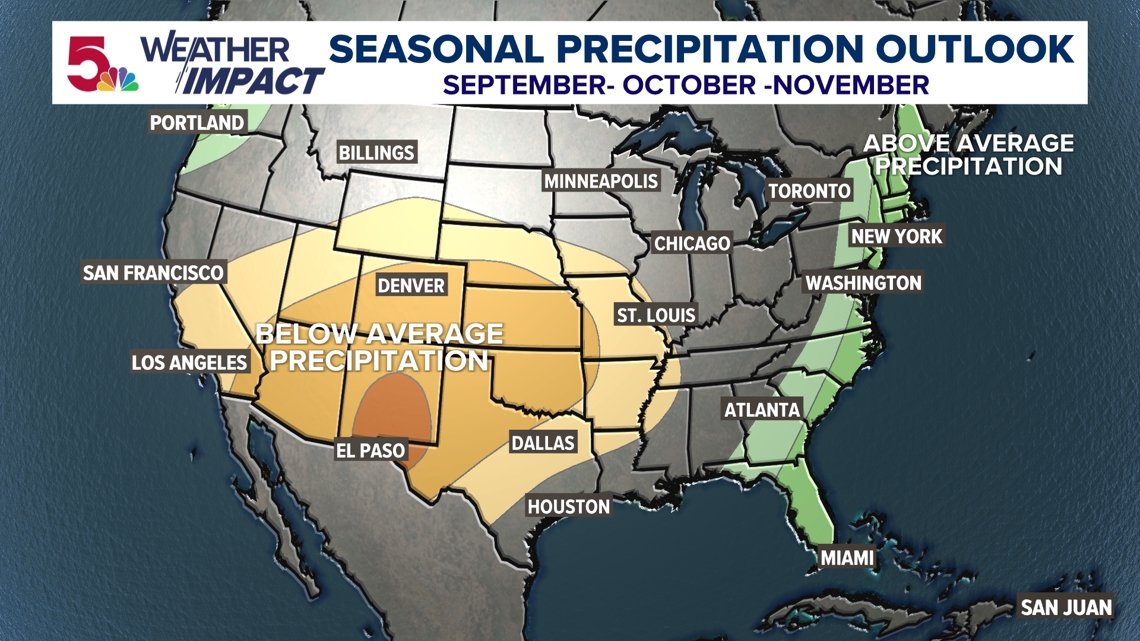
So now that we’ve looked at all the historical averages and everything else that goes into the fall season, what can we expect this year?
The climate prediction center has us under a drier-than-average outlook for these fall months, with an increased chance for us to be warmer than average.

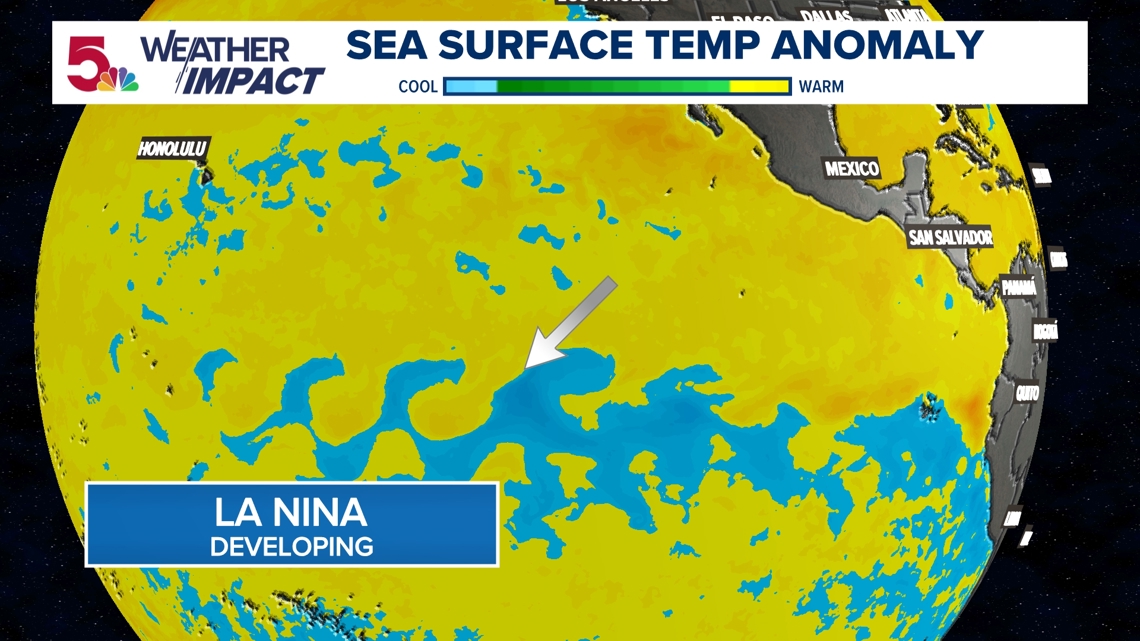
This isn’t all that surprising considering we have been pretty warm for the last couple of years, but this selective outlook is likely due to the La Nina pattern that is increasingly likely headed into the winter months. We become the beneficiary of warmer, drier conditions at this point.
This can be skewed very quickly, however, if an active tropic season in the Atlantic sends the remnants of a tropical low our way to cool us down for a few days and send us some rain. The weather impact team will be tracking this for you throughout the season and bring you the latest changes in this forecast.

